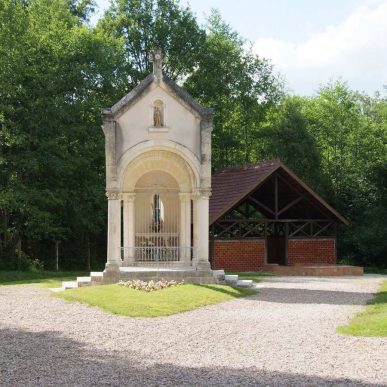Keep your eyes peeled, here come the witches.
In the heart of France, the Berry area has been famous for its witches for ages. In this marshy and foggy land of dark shadowy forests, the old people will tell you stories of curses, of cat-eaters or owls nailed on doors. Those legends were certainly by some real events.
In the XIXth century, the farmers started to leave the country to live in the towns. As a consequence, the Berry villages became deserted and even poorer without proper doctors. So they started to practise the « poor people’s medicine » because they had to cope and find ways to make do with what they had. In every village there would be a faith-healer and a bone-setter, and in many families its as not uncommon to find one who could block any sort of evil : skin diseases, burns, insects stings or bites…
When she wrote about this dark and mysterious country, Georges Sand played a great part in making the XIXth century whitches’ image available to all. In her novel « La Mare au Diable » (The Devil’s pool), she relates with great realism the local superstitions and wizzards’ stories. Claude Seignolle as well as other writers too have widely drawn inspiration from them for their novels.
With the passing time those « birettes » (a Berry word for witches) have finally become a kind of local colouring and a real cultural heritage.
The wizards’ night
The wizards’night finds its origines in old beliefs but also in real facts. Bué is definitely a wiches’ land with fantastic creatures coming out of the Sancerre customs and wizards. And here are not merely legends : at the end of the XVIth century at a time when the place was disturbed by religious conflicts, a very famous witchcraft trial took place at Sens Beaujeu, it was about the « Carroi de Marlou » in nowadays language « the evil wolf crossroad ». Right at that place, near the village of Bué, a sabbath was supposed to have taken place.
Five men were accused by a twelve year old boy of attending that wizards meeting. They were found guilty and executed on the spot of the fact. And as she was accused of the same fact, an imprisonned woman strangled herself. That real story inspired father Joseph Barreau and the tale-teller Jean Louis Boncoeur and gave them the idea of organizing the first witches feast (fête des birettes) in 1946, a kind of wizards fair in order to raise funds to repair the local church. Years after, the tradition is still carried on and it takes place every first Saturday in August on the very place of those tragic events now called «creux de Marloup ».
At night, the 1582 drama is staged by non professional actors directed by Jean-Louis Boncoeur. Part of the Bué inhabitants are costumed as peasants and others as witches and wizards. They are accused of all sorts of evil doings especially of being responsible for goats’ illnesses or vinetrees diseases.




